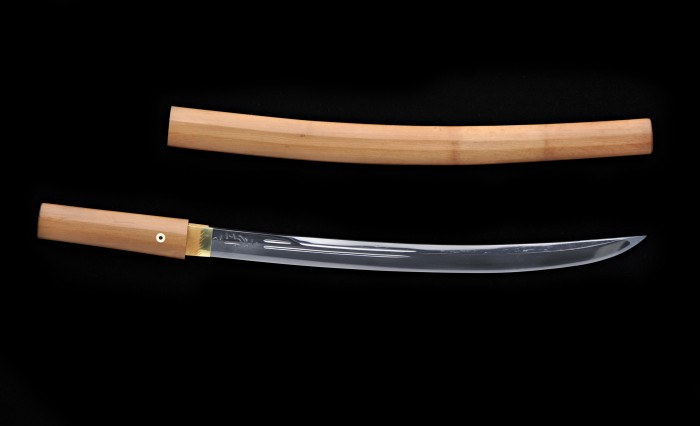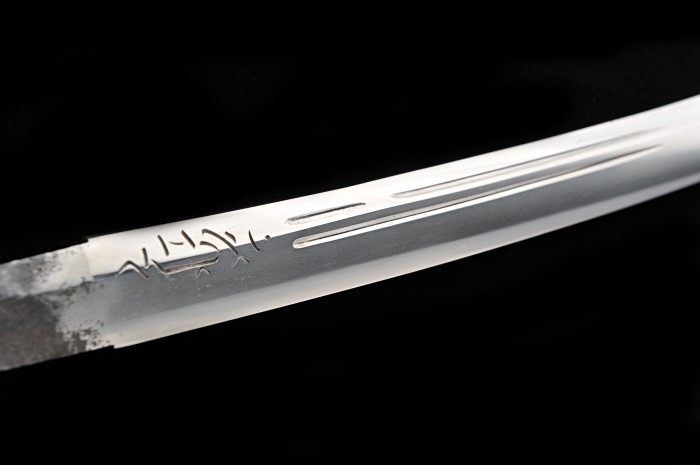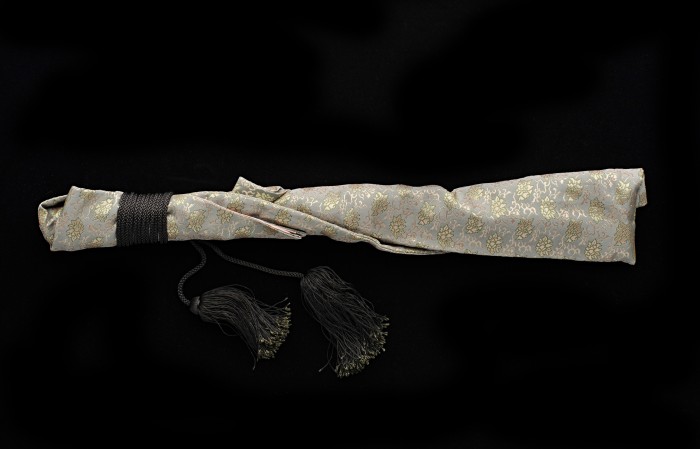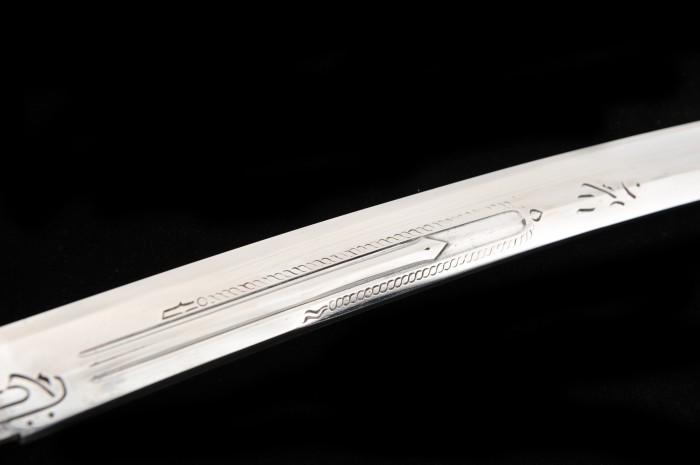End of Namboku Period (~1380) Nobukuni Wakizashi with Tokubetsu Hozon (SOLD)
Type: Wakizashi (shortened naginata)
Item No.: ujwa002
Swordsmith: Unsigned, Mumei (信国Nobukuni School verified by NBTHK)
Period: End of Namboku period, approximately 1380AD, second generation of the Nobukuni school in Kyoto. This is a time where the school flourished.
Length: 42.4cm
Curvature: 1.2cm
Included: Traditional shirasaya (scabbard as shown on this page), beautiful Japanese silk material bag, maintenance kit, stand.
Price: (SOLD)
Description:
This is a remarkable sword that was made over 600 years ago in Kyoto by the revered Nobukuni school of Yamashiro province (present-day southern Kyoto prefecture). The name originally inscribed on this sword disappeared in the process of shortening what was once a wider and longer naginata. The sword is in near pristine condition despite being centuries old.
The Sanskrit character engravings on both sides of this sword are simply magnificent. One one side of the sword it reads “Fudomyoo” (The Fire God worshiped by the Samurai) who changed himself into a sword. The symbolic engraving features a dragon trying to swallow the sword. The other side features the bonji character and (blood) grooves that served to lighten the sword and provide decoration. This bonji character was used by Buddhist monks as offerings to the gods. Many scholars agree that Nobukuni produced some of the finest engravings the Japanese Samurai sword world has ever seen.
One very important detail to note is that this sword was tested by Yamano Kaemon (山野加右衛門) who was the leader in his Yamano school – a school that was responsible for testing of swords for sharpness and smooth cutting ability. To test this sword, he cleanly cut through one arm and through the torso of a dead human being (near the waistline). Gold letters on the tang of this sword acknowledge that a highly respected person inspected and certified this sword.
The test would have occurred in the Edo period (1700s-1800s). There were 3 main schools for testing in Edo Period at the time, namely Nakagawa, Yamano, and Yamada.
Nobukuni was likely a son or grandson of Ryokai Hisanobu of the Rai school based in Kyoto. He later studied under Sadamune of Kamakura in Soshu province (present-day Sagami, Kanagawa prefecture). This sword is a shortened naginata. A story worth noting is that of Benkei, the huge and loyal warrior monk who carried a naginata.
This is a sword that comes highly recommended. It is fully certified Tokubetsu Hozon by the NBTHK (Special Conservation Sword from the Society for the Preservation of Japanese Art Swords).
A remarkably similar looking Nobukuni Wakizashi sword from the same era (likely the same swordsmith) can be found in the Kyoto National Museum as an Important Cultural Property









